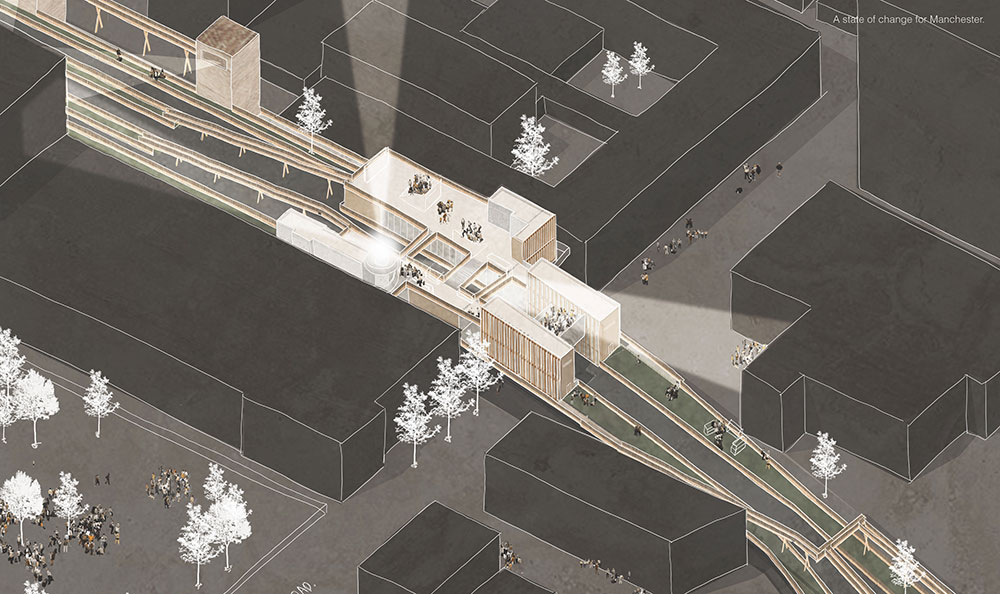Re-Imagining The Mancunian Way
How can this epic 3km of monolith that divides Manchester in two be repurposed from a 1960’s super highway exclusively for cars to become part of everyday life and reconnect the city?
Colaborative Urbanism: New Methods For Making Tomorrow’s Cities
‘Object-building’ and ‘top-down’ master planning have characterised the architecture and urbanism of the recent climate emergency era. The FLUX atelier centres on a series of speculative practices which offer practical alternatives to top-down design and a fresh approach to time (slow urbanism), space (urban acupuncture) and engaging people (peripatetic architecture and performance). The FLUX Atelier sets out to equip emerging designers with new methods to meaningfully engage citizens in the transformation of their city.
A City Without Cars
As google earth satellites passed over Manchester this winter, they documented a Mancunian way without cars. What started the year as a hypothetical possibility in the brief became, as a result of a national lock-down the tangible reality of the site for a prolonged moment. Some students had the opportunity to walk up on to the motorway deck and experience the highway as a site for everyday life for a fleeting moment.
Public Realm
The Covid-19 global pandemic laid bare a number of inequalities in society, not least the disparity in access to and poverty of public realm globally and in the city of Manchester. Each of the manifestos, programmes and design projects were deeply socially and politically engaged, delving deeper into matters of care for a different public realm for society because of the context in which they were conceived. The work in the atelier is a testament to the agility resourcefulness and resilience of our students.
Temporality
In semester one the atelier focuses on the transformation of the city through temporal and peripatetic architectures. Each student was tasked with devising a series of temporary interventions (c. 2-10 years), urban acupuncture that could transform the Mancunian way as a whole.
Matters Of Concern
Each student was challenged to identify their own matters of concern and draw up their own brief and programme for the repurposing of the Mancunian way. In semester two students then developed a speculative design that could activate a state of change for communities over a longer time frame for one site.
Collectively these new methods and practices for city making were framed by two questions:
Who is the city for?
What can a speculative design offer to establish a state of change?


